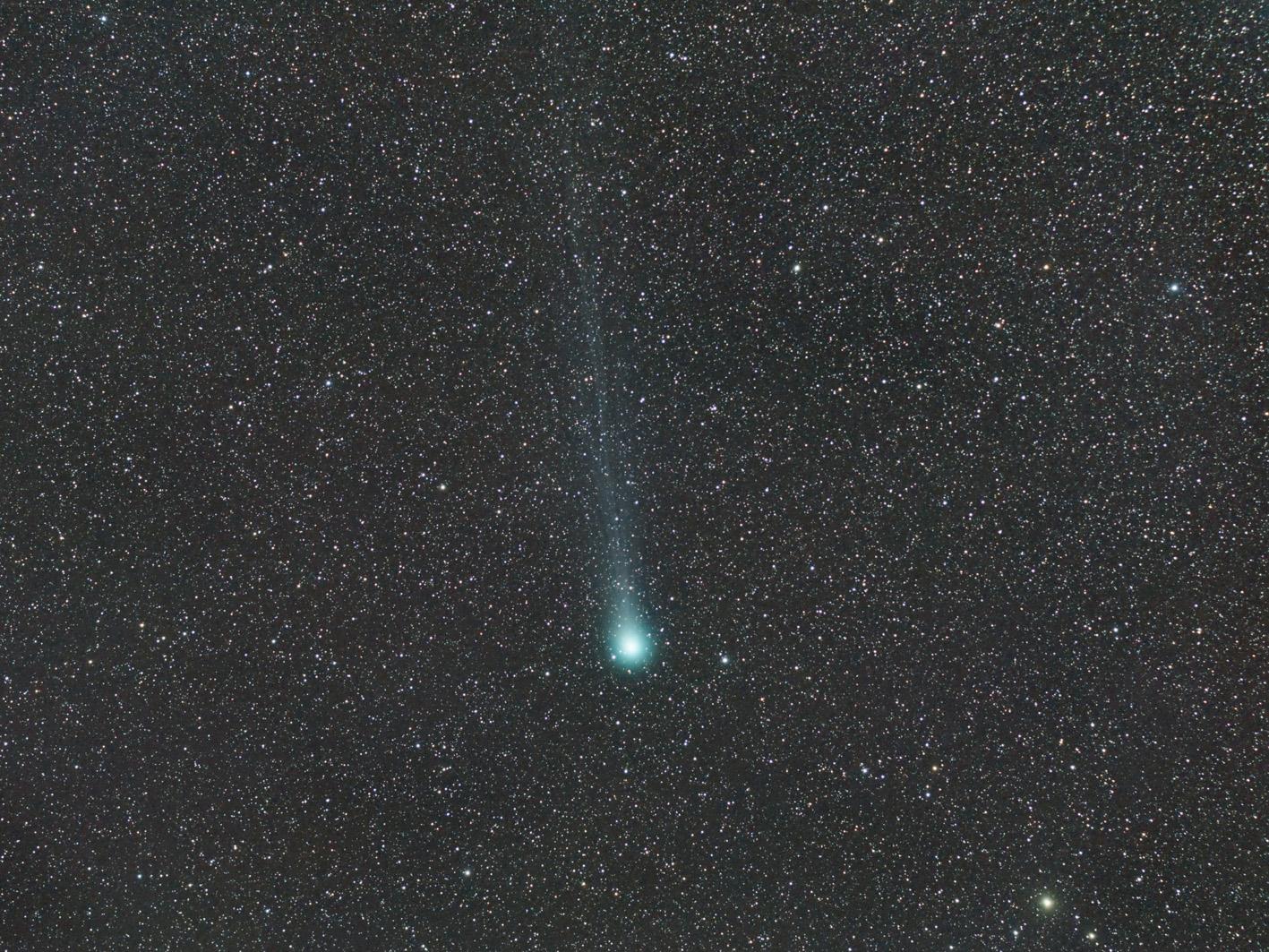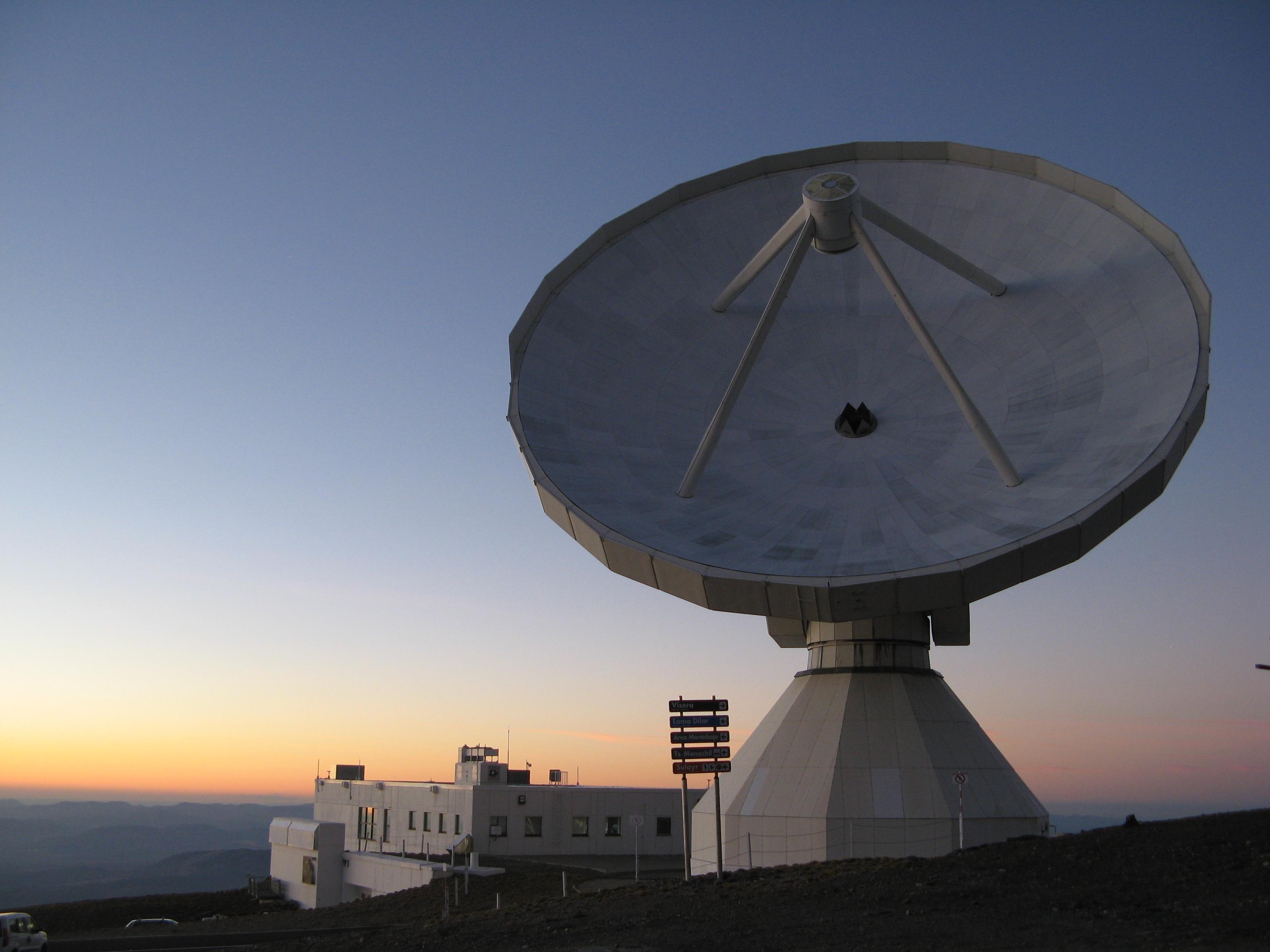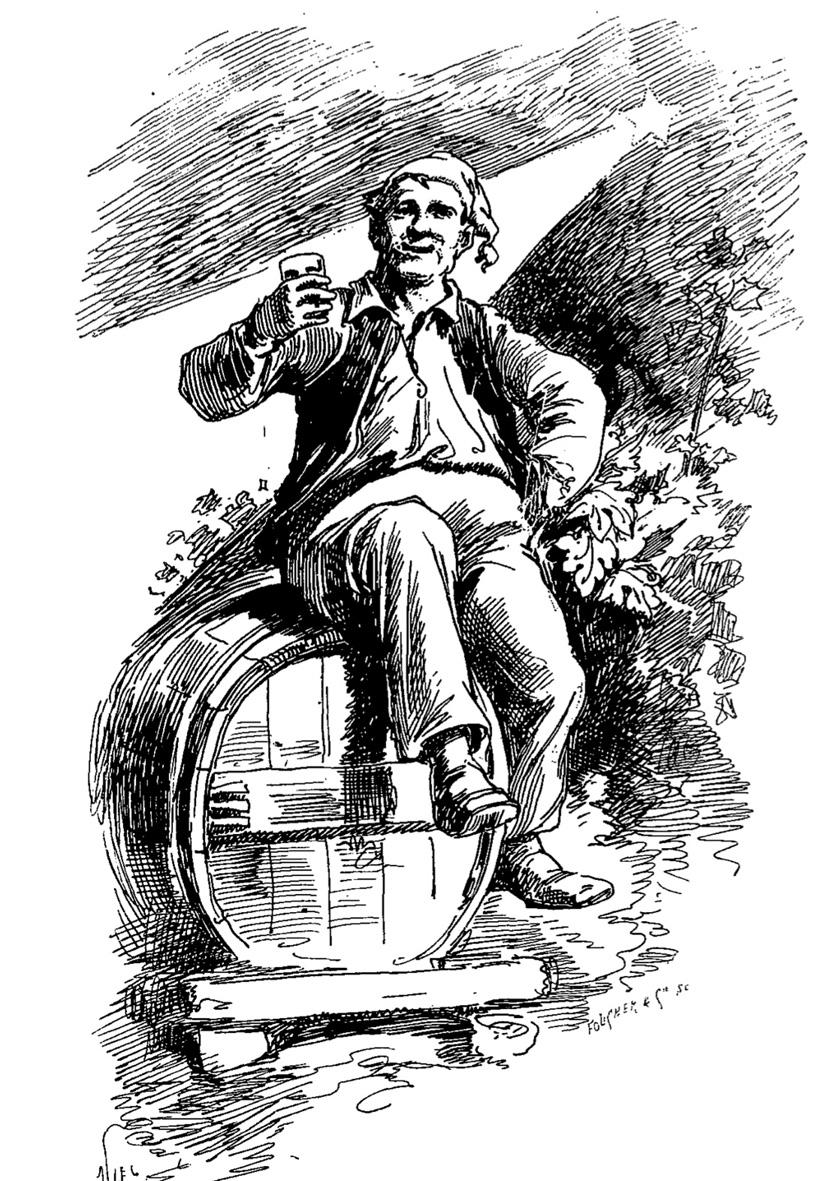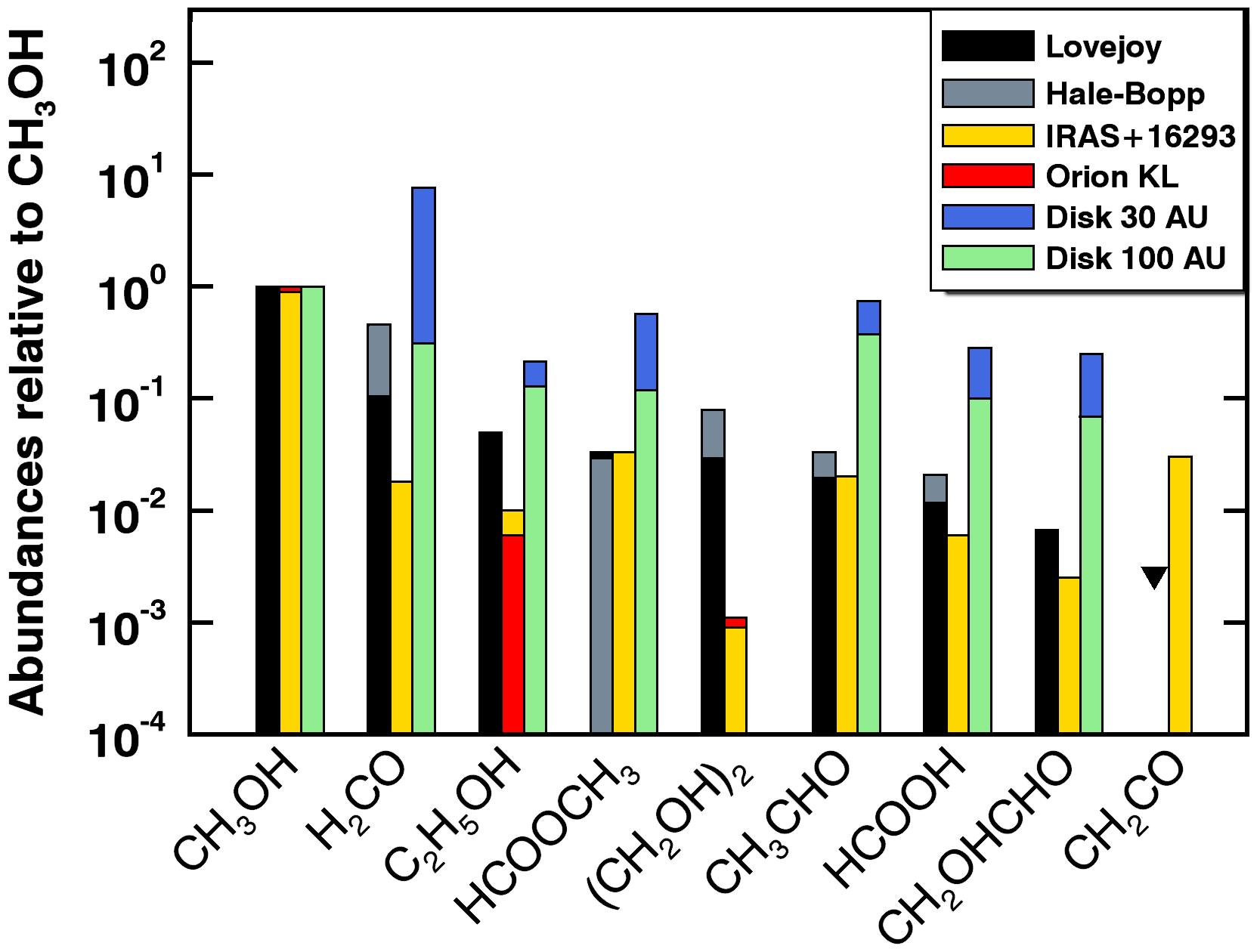News
Ethyl alcohol and sugar in a comet!
An international team led by French researchers from LESIA (Laboratoire d’études spatiales et d’instrumentation en astrophysique – Observatoire de Paris / CNRS / UPMC / Université Paris Diderot) and LERMA (Laboratoire d’études du rayonnement et de la matière en astrophysique et atmosphères – Observatoire de Paris / CNRS / UPMC / ENS / Université de Cergy-Pontoise) announces the first detection of ethyl alcohol (C2H5OH) and the simplest sugar, glycolaldehyde (CH2OHCHO) in comet C/2014 Q2 (Lovejoy). The paper is published online in Science Advances on October 23, 2015.
Comet C/2014 Q2 was discovered in August 2014 by an Australian amateur astronomer Terry Lovejoy. It comes from the Oort cloud, a large reservoir of comets in the coldest regions at the edge of the Solar System. Comet Lovejoy was visible to the naked eye for more than a month around the time of its closest approach to the Sun and the Earth, in January 2015. It has been one of the intrinsically most active comet to pass close to the Earth since comet Hale-Bopp in 1997, producing more than 20 tons of water vapor per second at its peak activity.
 |
| Picture of comet C/2014 Q2 (Lovejoy) taken on February 12, 2015. © Fabrice Noël |
Comets are frozen remnants of the formation of our solar system and their ices hold clues to the processes that took place 4.5 billions years ago. When comets come close to the Sun, the ices of their nuclei sublimate and form an atmosphere, rich in molecules that can be probed from the ground at short radio wavelengths, with instruments such as the IRAM (Institut de RadioAstronomie Millimétrique) 30m radiotelescope, equipped with powerful detectors.
 |
| IRAM 30m radiotelescope, located in the Sierra Nevada mountains close to Granada, Spain. © N. Biver / Observatoire de Paris / LESIA |
Observations conducted with this radiotelescope in January 2015 have enabled the determination of the production rate of 21 molecules in comet Lovejoy, including first detections of two new species, ethyl alcohol and glycolaldehyde, with abundances relative to water of 0.12% and 0.02%, respectively. “We found that during its peak activity comet Lovejoy was releasing every second the amount of alcohol equivalent to 500 bottles of wine" said Nicolas Biver, CNRS researcher at the Paris Observatory and the lead author of the study.
Among other molecules detected, many are the so called “Complex Organic Molecules”, such as ethylene glycol (used as antifreeze), methyl formate, acetaldehyde (or ethanal), formamide, formic acid, or formaldehyde.
These complex organic molecules are relatively abundant in comet Lovejoy in comparison to what is measured in regions of star formation, suggesting that important organic synthesis was taking place in the outskirts of the protosolar nebula.
|
|
| Abundances relative to methanol (CH3OH, methyl alcohol) measured in comets Lovejoy and Hale-Bopp, as compared to two regions of star formation. The figure also shows the results of simulations of organic synthesis in a protoplanetary disk at 30 and 100 AU from the protostar, taken from the literature. |
This discovery comes at a particularly fruitful time for cometary science, as the Rosetta mission of the European Space Agency analyses in-situ the composition of comet 67P/Churyumov-Gerasimenko. Several of the molecules identified in comet Lovejoy have also been found at the surface of comet 67P, with instruments onboard the Philae lander (Results published in Science on July 31, 2015).
These two comets come from different reservoirs: the Oort cloud (at 10000 to 100000 AU from the Sun) for comet Lovejoy and the Kuiper belt (at 30 to 50 AU) in the case of comet 67P. The comparison of their compositions is thus very important for constraining the place of formation of these two families of comets.
Comets certainly contributed to the supply of water and other compounds to the young Earth, during its first hundreds of millions of years. “Putting into evidence an important organic complexity in the cometary material is essential to get a better understanding of the conditions that lead to the emergence of life on Earth”, adds Dominique Bockelée-Morvan CNRS researcher at the Paris Observatory and co-author of the paper.
IRAM observations were complemented by measurements of the outgassing of water in the comet, using the Nançay radiotelescope of the station de radioastronomie de l’Observatoire de Paris, at Nançay (Cher department), as well as the submillimeter space observatory Odin, operated under a franco-swedish cooperation.
The scientific team
This results come from an international collaboration including researchers from two departments of the Paris Observatory, LESIA (Laboratoire d’études spatiales et d’instrumentation en astrophysique – Observatoire de Paris / CNRS / UPMC / Université Paris Diderot) and LERMA (Laboratoire d’études du rayonnement et de la matière en astrophysique et atmosphères – Observatoire de Paris/CNRS/UPMC/ENS/Université de Cergy-Pontoise), IRAM (Institut de RadioAstronomie Millimétrique funded by INSU/CNRS (France), the Max-Planck-Gesellschaft (Germany) and the Instiuto Geográfico Nacional (Spain)), the Laboratoire d’Astrophysique de Bordeaux (CNRS / Université de Bordeaux), Stockholm Observatory, and NASA.
Contacts
Nicolas Biver, CNRS /Observatoire de Paris, + 33 1 45 07 78 09 - nicolas.biver@obspm.fr
Dominique Bockelée-Morvan, CNRS/Observatoire de Paris, + 33 1 45 07 76 05 - dominique.bockelee@obspm.fr
Référence: DOI URL: http://advances.sciencemag.org/content/1/9/e1500863
 |
| Illustration of the song "Le Vin de la Comète" from Aristide Bruant (1883)" (Extracted from "Chansons et monologues d'Aristide Bruant", Vol. 3, E. Geffroy (Paris) 1896-1897.) |




